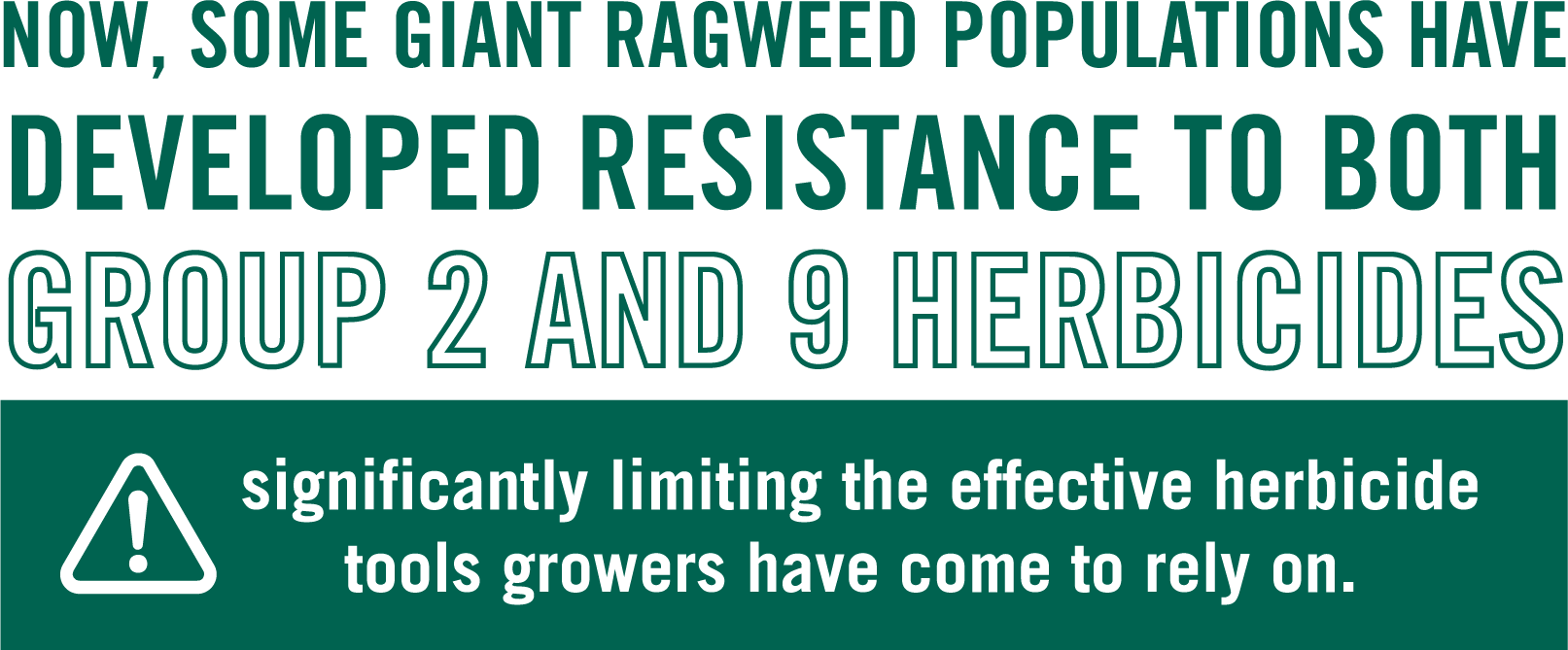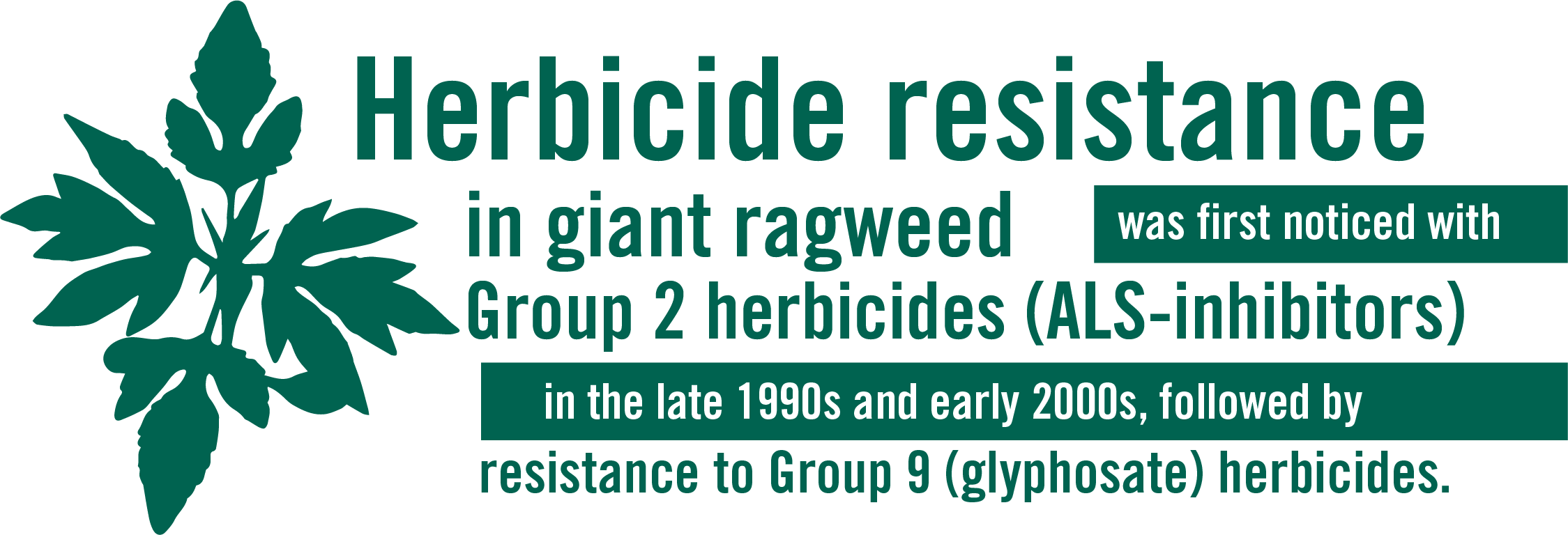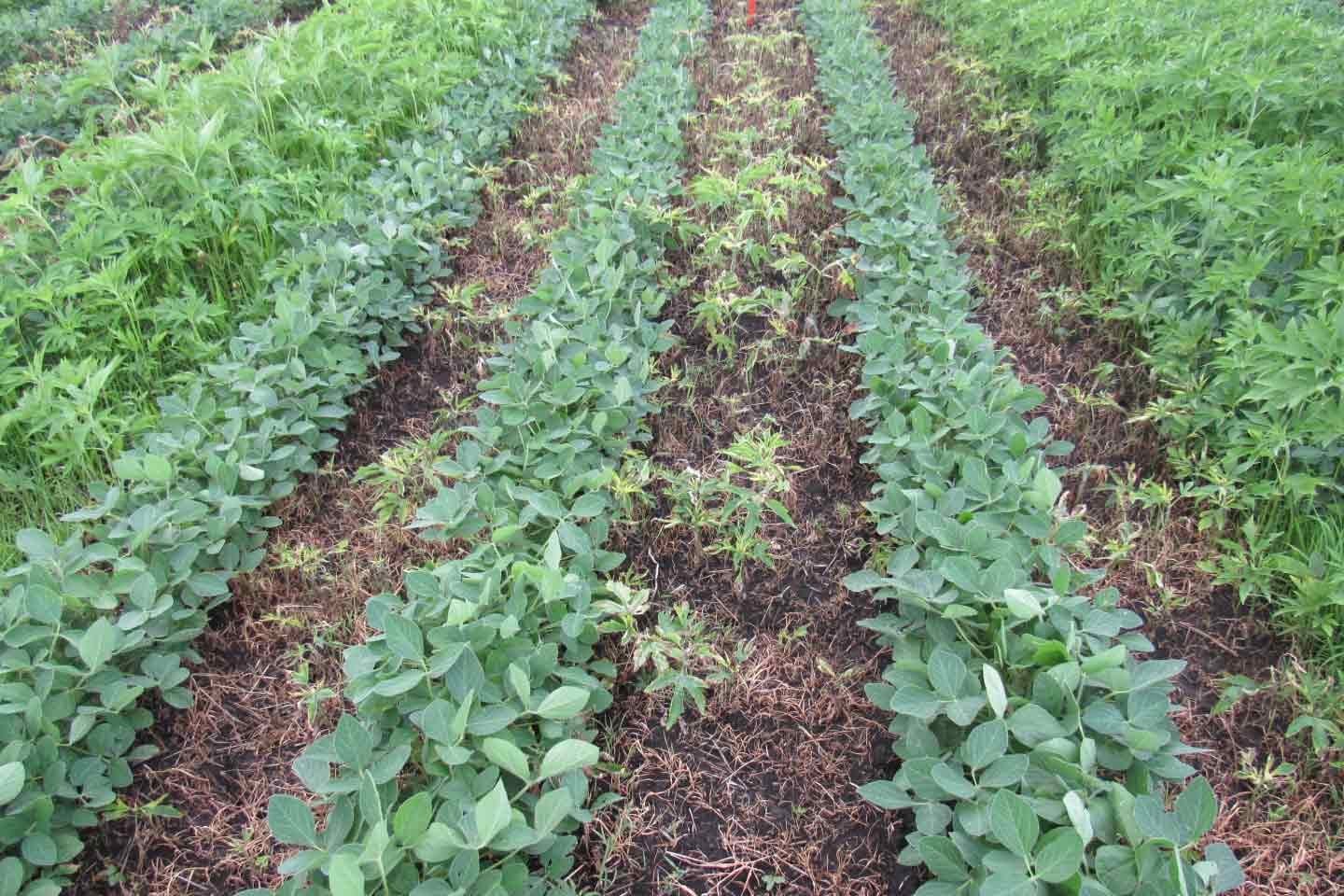Weeds: Giant Ragweed
When a weed can grow to be 3-16 feet in height, it’s earned the title of giant.
Giant ragweed — known in some circles as horseweed, horse-cane, richweed, bitterweed, bloodweed and more — is a fast-growing weed. It can quickly surpass a given crop in height, competing for sunlight and creating a canopy with 4-8 inch wide leaves that blocks sunlight from reaching developing soybean plants. This competition leads to significant yield losses at low plant densities.
Like many weeds, this species’ seeds are a tremendous threat to year-over-year weed management programs. Giant ragweed seeds in particular pose a challenge due to their larger size, which allows emergence from deeper burial depths often prompted by tillage. This phenomenon allows giant ragweed to escape many preemergence herbicide applications. Their delayed emergence places significant emphasis on the need for soil-residual herbicides and a timely, effective postemergence herbicide application.
Help keep your fields clean of giant ragweed this year and beyond with these tools and insights.
Did you know?


Your toolkit to success
Whether growing corn or soybeans, there’s an FMC herbicide that fits your application timing and weed spectrum needs. Growers should utilize the variety of key soybean herbicides in the marketplace to combat giant ragweed in partnership with our portfolio of products.
See how solutions like Authority® First DF herbicide, Authority® XL herbicide and Anthem® MAXX herbicide can be integrated into your plans to help manage giant ragweed. Plus, you’ll also help control other grasses and small-seeded broadleaves when you do.
Note: For growing regions with ALS-resistant biotypes, a two-pass POST herbicide strategy is recommended to combat giant ragweed. This two-pass approach should encompass multiple effective sites of action.
Soybeans

Product application at the following stages for optimal weed control
Burndown/
preemergence
authority® FIRST df herbicide or authority® xl herbicide
Can be applied preplant, preplant incorporated or preemergence up to three days after planting but before emergence. If applying at burndown, tank-mix with other approved and effective foliar site of action herbicides for giant ragweed control.
USE RATES AND TANK-MIX PARTNERS:
- Authority First DF herbicide use rate: 6.45 – 8 oz./A
- Authority XL herbicide use rate: 5 – 8 oz./A
- Tank-mix partners*: Aim® EC herbicide, 2,4-D, dicamba, glufosinate, glyphosate, paraquat
Emergence-V6 Development
Anthem® MAXX Herbicide
Combine Anthem® MAXX herbicide with other effective postemergence technologies to combat resistant giant ragweed, i.e., dicamba, 2,4-D and glufosinate-containing herbicides. Utilize Anthem MAXX herbicide as a foundation for residual grass and small-seeded broadleaf control. Can be applied early postemergence through V6 soybean stage.
USE RATES AND TANK-MIX PARTNERS
- Use rate: 2.0 – 5.7 fl. oz./A
- Tank-mix partners*: Anthem MAXX herbicide is an approved tank-mix partner for key postemergence technologies that deliver an additional mode of action and residual control to the tank with tools like XtendiMax®, Engenia®, Enlist One® and Enlist Duo® herbicides.
Corn

Product application at the following stages for optimal weed control
Planting-Emergence
Anthem MAXX herbicide
Anthem MAXX herbicide can be used in an early preplant tank-mix 15-45 days prior to planting. Anthem MAXX herbicide will provide foundational residual control of grasses and small-seeded broadleaves. Tank-mix with atrazine (Group 5), or other (Group 27 or Group 4) herbicides to help control giant ragweed.
USE RATES AND TANK-MIX PARTNERS
- Use rate: 2.5 – 6.5 fl. oz./A
- Tank-mix partners*: atrazine (Group 5), glyphosate (Group 2a), glufosinate (Group 10), or paraquat (Group 22), or 2,4-D, dicamba, clopyralid (Group 4) or mesotrione, isoxaflutole (Group 27) herbicides.
emergence THROUGH V4 STAGE
Anthem MAXX herbicide
Early POST application of Anthem MAXX herbicide provides residual control of grasses and small-seeded broadleaves and suppression of velvetleaf, morning glory spp. etc.
USE RATES AND TANK-MIX PARTNERS
- Use rate: 2.0 – 6.0 fl. oz./A
- Tank-mix partners*: 2,4-D, approved dicamba herbicides, clopyralid (Group 4), mesotrione, topramezone, tembotrione (Group 27), atrazine (Group 5), glyphosate (Group 2a), glufosinate (Group 10)
* If there are questions about any tank-mix recommendations, please consult with the product labels, local agronomist or FMC Technical Services Manager.
Atrazine, XtendiMax herbicide with VaporGrip Technology and Engenia herbicides are Restricted Use Pesticides. Always read and follow all label directions, precautions and restrictions for use. Some products may not be registered for sale or use in all states. FMC, the FMC logo, Aim, Anthem and Authority are trademarks of FMC Corporation or an affiliate. XtendiMax is a trademark of Bayer CropScience .Engenia is a trademark of BASF Corporation. Enlist One and Enlist Duo are trademarks of Corteva Agriscience. Enlist Duo and Enlist One are the only 2,4-D products authorized for use with Enlist crops. ©2023 FMC Corporation. All rights reserved. 23-FMC-1439 06/23
